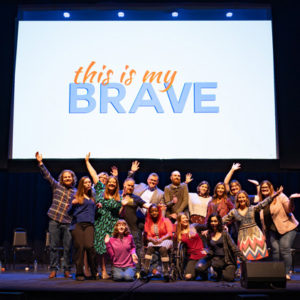A Guest Post by Martha Rhodes, Author of 3,000 Pulses Later
Happy birthday to me, happy birthday to me…
I was born in the fall. Late September to be exact.
Fall is the season that’s all about things in nature dying — green trees turning to brown skeletons and lush fields going fallow. The days die sooner as they become shorter and the frost sets in. It makes perfect sense to me that I’d be born in the fall because I’ve always felt like my life has been a path of dying rather than one of living.
In my late forties I was prescribed medications for Major Depression Disorder that numbed me to the fact that my world was a bottomless pit of sadness. In the beginning that was enough to keep me going. I assumed that by taking the daily “happy pill” I could carry on with life and hold my dark depression secret at bay. At least I thought I could.
It wasn’t until several years later when I survived a suicide attempt that I discovered I had become one of over 4.5 million people in the U.S. with Treatment Resistant Major Depressive Disorder (TRD-MDD). No one could have been more surprised than I was to end up in a psychiatric ward! After all, I had a successful career in advertising, a healthy 35-year marriage, and a large, loving family. The idea that I felt depressed in spite of the medication led me to conclude that I was simply the most ungrateful wretch on the planet who didn’t deserve to live.
I’ve now come to realize a few important things: 1) how frequently TRD goes undiagnosed; 2) how real, physical, and serious this illness is; and 3) how critical it is for me to accept that I am one of the millions whose life nearly ended because of it. I accept my diagnosis not as a curse or a reason for self-pity, but as a gift for my survival.
I believe there is a time in almost every person’s life when their spirit must decide whether to go on with life—or not. This decision isn’t necessarily a conscious one as in an “Aha” moment, nor is it hidden in a dream or revealed in a gypsy’s tea lives. It can happen in a heartbeat, or over the course of many years. It is simply part of the human condition when life serves up enough challenges that the spirit either becomes too tired, too confused, too frustrated or too hopeless to sort through another day, another month or another year of living.
For some people, the idea of ending one’s life is absolutely out of the question. Religious heresy. Philosophically abhorrent. They seek prayer and counseling for salvation and answers. They get busy, pull themselves up by their bootstraps and move along their life’s path, hoping that tomorrow will be better. And it usually is for them.
For myself, wanting to end it all is a dark inner voice that constantly provokes me into a battle between life and death, a struggle tied to curiosity, hopelessness, and despair. I, too, have sought prayer and counseling, but to no avail. I’m one of the stricken ones. One of those people who’s been dealt a lousy hand because my brain has either been wired differently, or my body refuses to provide my brain with the systemic chemicals needed to keep me emotionally and mentally balanced.
Living with depression requires my constant vigilance and self-care in order to manage it and silence the inner voice that insidiously picks away at my will to live. We are all fortunate that there are several options available to treat depression: psychotropic medications, talk therapy, Cognitive Behavioral Therapy (CBT), Electroconvulsive Therapy (ECT), to name a few, and for myself, Transcranial Magnetic Stimulation (TMS).
But these are not necessarily a cure for depression. They are all just tools in the doctor’s toolkit that require my full commitment as a patient to do my part along with my chosen therapy. There is no “get out of jail free card” with any of them. The key thing we need to embrace is this: we must patiently—and with courage and perseverance—find the tool(s) that work(s) for each and every one of us.
I’m an ostensibly okay kind of gal whose brain goes on the fritz every now and then if I don’t take care of myself physically, psychologically, emotionally, and spiritually. As a committed and participating patient, I have to claim ownership of my physical, chronic illness and adhere to a lifestyle that enhances my treatment of choice because no one else can do this for me.
Nevertheless, I’m constantly looking over my psychological shoulder, keeping a watchful eye out for my “Depression Demon” who will sometimes tap on it and whisper, “I’m back!” But now I’m happy to say I at least have the awareness it’s lurking and always will be.
I’m even happier—no relieved—to know that I have a therapy tool with TMS that will rescue me from the depths of despair I experienced several years ago when I fell prey to depression’s ultimate goal: suicide.
I still sometimes feel like I’m on a path of dying, but it is just that—a path. This journey is taking me through many seasons of winter’s seclusion, spring’s rebirth, summer’s sunlit warmth, and back to yet another fall birthday.
*****
About the Author
Martha Rhodes, author of 3,000 Pulses Later: Surviving Depression Without Medication, is on the International ECT and Neurostimulation (ISEN) Patient Advisory Counsel and is a member of NAMI. She spends her time as a TMS patient advocate, writer, and speaker about mental illness throughout the U.S. and the United Kingdom.

